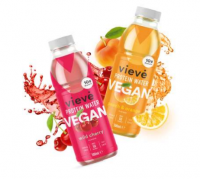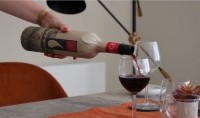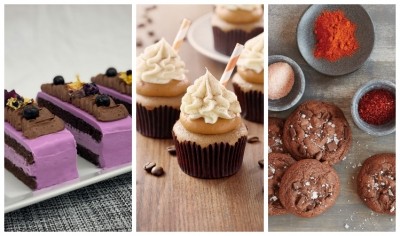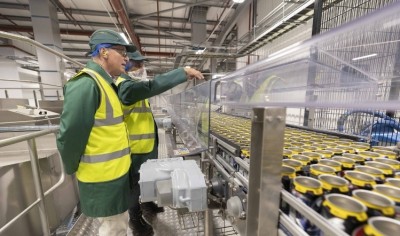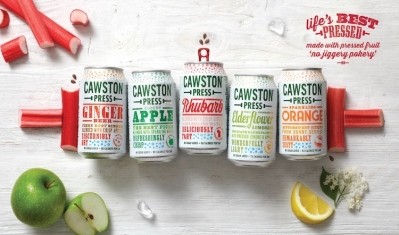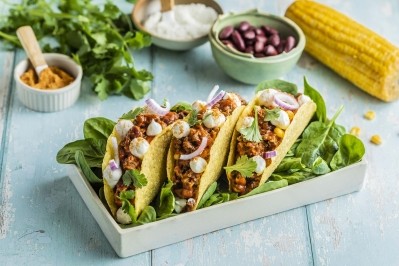Beverage innovation feature: long read
Health, environmental and vegan demands spark beverage innovation
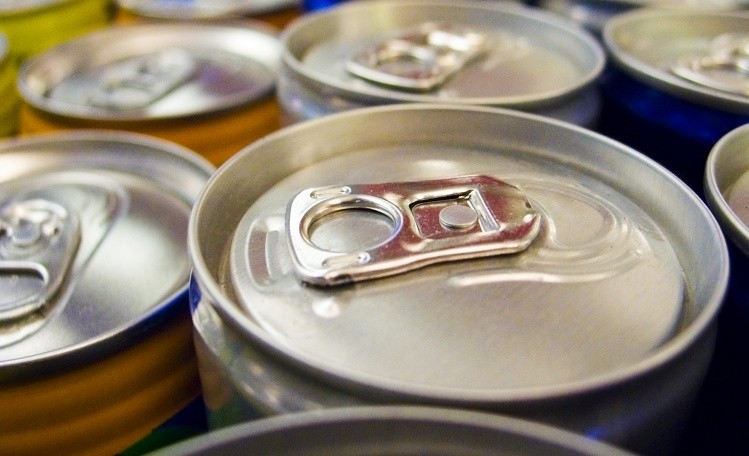
Ingredients firm Synergy identifies better-for-you beverages as a key area of growth, but warns that EU regulations have made it challenging to label and market products as functional without significant scientific evidence to back up claims.
As European business development manager Vicky Berry explains: “For manufacturers looking to succeed in functional beverages, ingredients used within these products, such as vitamins and minerals, must have scientifically proven benefits.
“Furthermore, it is also fundamental to pair these functional ingredients with familiar but exciting flavour profiles, especially flavours with a natural health halo such as ginger, turmeric, and honey, as these flavours are associated with ingredients that are perceived to be inherently healthy and better-for-you. This will make sure that innovative products can be both accessible and appealing to consumers.”
Synergy pinpoints three areas for manufacturers to target when creating functional areas: body; mind and soul; and reflection.
For body, it highlights flavours such as ginger and turmeric to promote gut health, while consumers looking for protein drinks have favoured pineapple, coconut and mango in their beverages. There's also greater demand for drinks that use vitamins to boost cognition in the mind and soul category, as well as a focus on ‘healthy energy’ beverages that reduce fatigue without leading to a caffeine- or sugar-fuelled crash later in the day.
Beauty and diet
Reflection focuses more on people’s looks and the pursuit of a diet that can impact the skin’s appearance. Vitamins A, C, zinc, and Omega 3 prove popular here, along with ingredients such as aloe, hyaluronic acid, and rose water, which are often applied to the skin specifically to treat certain ailments.
“Melon is a popular ingredient in this space, as demonstrated by beverage brand Mello, which makes clear reference to the benefits that melon can offer,” Berry added.
“Honeydew melon is high in vitamin C and antioxidants, whilst cantaloupe juice is referred to as the ‘beauty fruit’ due to its perceived ability to improve skin hydration, clear up acne, and reduce signs of ageing. Manufacturers looking to appeal to beauty conscious consumers could therefore consider utilising melon flavours to benefit from the perceived skin benefits of these fruits.”
In order for manufacturers to ‘get ahead’ in the field of functional beverages, they need to understand that consumers are increasingly drawn to these natural cues.
“For manufacturers, this means it is vital to understand how beverages can fit into the shift towards health and immunity,” says Berry.
“By understanding what benefits consumers are looking for in their beverages, and how these can be delivered through the use of different flavours, ingredients, and fortifications, manufacturers can continue to meet changing demand in beverages by creating products that have a positive impact in terms of both taste and health benefits.”
Health-conscious
The growing demand for more health-conscious drinks also ties into the growth of the vegan food and drink market. With many consumers associating vegan products with health, a product that straddles both camps has a better chance of succeeding in the long run.
Water brand Vieve has staked its claim as the ‘world’s first’ producer of vegan protein waters. Made with plant-based proteins, its new product aims to grab a share of the ever-growing market of vegan and flexitarian consumers looking for 'an easy and convenient plant-based protein boost without the added sugars, fats and excess calories'.
Speaking at the launch, founder Rafael Rozenson said: “The market for protein products in the UK has grown massively in the last decade, from about £50m to an over £1bn industry today and we feel there is lots of upside for growth as we bring a whole new segment of consumer into the market who are put off by traditional powders, drinks and shakes.”
Of course, health benefits aren’t the only thing consumers look for in their drinks. According to Britvic's most recent Soft Drinks Report, value and premiumisation – both ends of the spectrum – are key areas that manufacturers need to tap into in order to grab the population’s attention.
As large numbers of consumers begin to feel the pinch from rising living costs and inflation, they are looking to rein in their spending and make their money go a little further. The easing of lockdowns in the wake of the COVID-19 pandemic has also seen the rise of on-the-go formats as consumers returned to pre-pandemic shopping habits.
Energy market
At the same time, energy became the fastest growing and biggest category in convenience, with sales growing 21% and increasing in value by £116m as shopper demand for ‘pick-me-ups’ increased during the pandemic.
Chris Newman, head of category management for convenience and impulse at Britvic, says: “Stimulants energy was one of the real winners in 2021. This category also represents a strong trade up opportunity for the convenience channel, with approximately two times higher average price per litre than the soft drinks average."
Consumer taste may be a driving factor behind beverage innovations, but the needs of the planet have become increasingly important when it comes to how beverage manufacturers operate. In the course of the development of new products, an effortless way for a manufacturer to address these needs is by delivering innovative packaging design.
As Rabobank beverages senior analyst Jim Watson explains, packaging is a major contributor of beverage companies' greenhouse gas emissions. It is therefore an easy area for cost cutting – especially at a time when inflation is squeezing margins.
Beverage companies will look to innovate by using alternative packaging materials over the next few years, incentivised by customer preference, green legislation and the rising costs of traditional materials.
“We’re seeing manufacturers make packaging lighter, particularly in plastics but also in glass used for wine and spirits,” Watson adds. “Yet brands will have to balance environmental ambitions with the need to maintain premium aesthetics and feel.
Bag-in-box
“They can also opt for larger bottle sizes, meaning consumers get more product for the packaging. While beer brands have gone down this route, the soft drinks industry has tended to move in the opposite direction.”
Watson also points to bag-in-box packaging formats as a simple way to save on emissions and packaging costs over traditional 750ml glass bottles. The former boasts a carbon footprint eight times lower than glass and a 90% reduction in packaging costs, according ‘prominent’ manufacturers.
“It will be the role of beverage brands to help reshape customer attitudes, as they have with aluminium cans, which were once seen as an inferior packaging option but are now associated with trendy, high-end craft beer with exciting designs,” he continues.
“The onus to break this stigma falls particularly on premium brands, which can create a halo effect by using bag-in-box for their products.”
Another packaging innovation with the potential to cut emissions and packaging costs is paper bottles, a format that is already been trialled by companies such as Carlsberg and Johnnie Walker.
There has also been a limited rollout within the wine sector as well. In April this year, wine specialist when in Rome announced it had launched a range of products in paper bottles, a format that had already been selected by online retailer Ocado.
Carbon footprint
With the potential to be 75% lighter than glass and an 84% lower carbon footprint, this format could prove more popular with consumers –due to the green image and ‘novelty factor’ – Watson concludes.
Outside of altering packaging to achieve their sustainability goals, manufacturers have been exploring easy wins to help cut down on their carbon footprint. Top of the list of simple changes to the business included reducing the food miles of their products.
In May, glass bottle manufacturer and filler Encirc signed a deal with Britvic to fill the beverage firm’s Robinsons 500ml glass cordial bottles, which it already manufactures at its Elton, Cheshire site.
The move to make and fill Britvic’s cordial bottles at the Cheshire site is designed to eliminate a thousand lorry journeys in Great Britain and Northern Ireland across three years, resulting in carbon savings of up to 22,000 tonnes.
Parent company Vidrala has also invested £75m in a national distribution hub for the UK and European beverages industry to further enhance Encirc’s bottling and distributing abilities. The hub is set to significantly reduce lorry movements nationwide and achieve notable carbon savings across supply chains in the UK.
Manufacturers are already well on track to meet the demands of health-conscious consumers, but there's no doubt there are more avenues to explore when it comes to functional ingredients. While UK regulations mirror those in the EU, manufacturers will have to march to the beat of their drum, but this could be set to change in the future thanks to Brexit.

